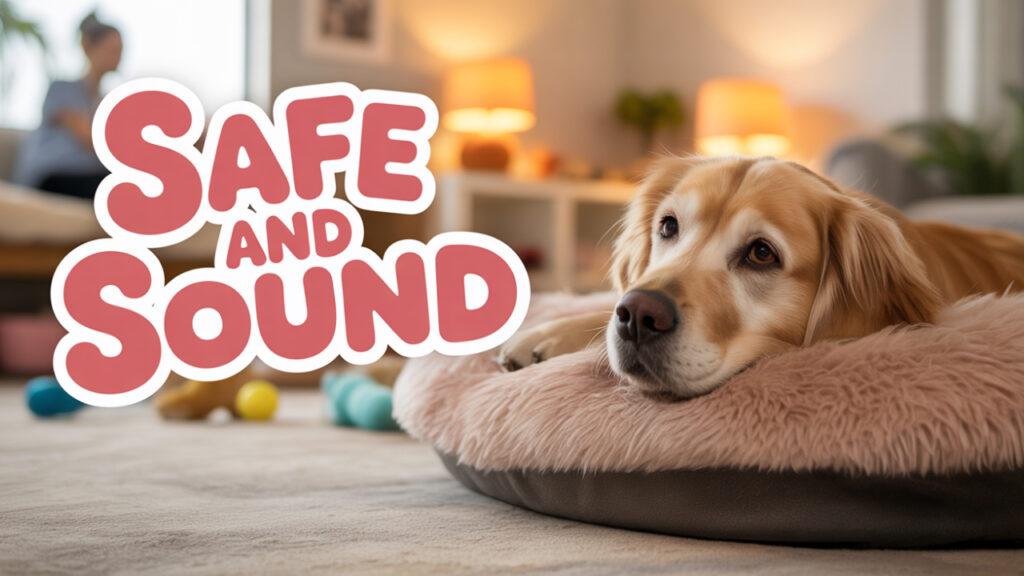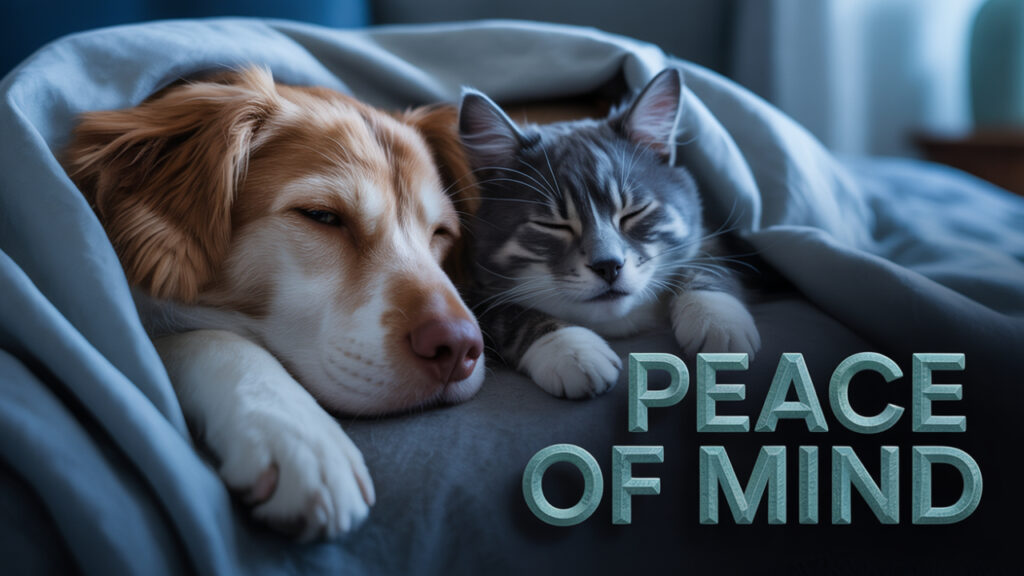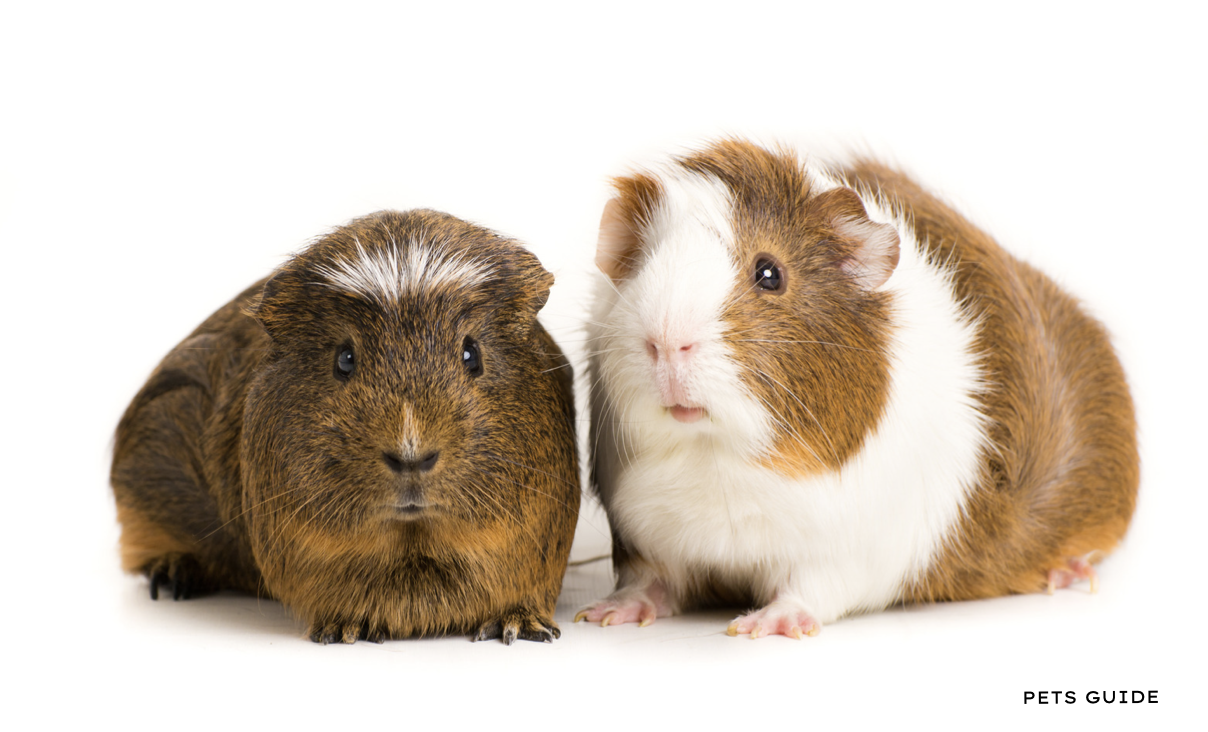Pets
Hottest Pet Business Prospects in 2023

Hottest Pet Business Prospects in 2023
The pet industry has seen remarkable growth in recent years, and 2023 is no different. The bond between humans and their pets is stronger than ever, contributing to the rise of pet-related businesses.
In 2023, several promising opportunities stand out in the pet industry. In this article, we’ll share a rundown of the hottest prospects this year.
Regardless of the type of pet business you’re planning to establish, remember to create a business plan that serves as a roadmap for success. For a thorough plan, refer to these business plans templates.
Pet Tech Innovations
The first area of promise is the marriage of technology with pet care. As our lives enter the digital era, it’s only natural for pet-related services to adapt accordingly.
The realm of pet tech is expanding rapidly, offering smart feeders that allow owners to remotely manage their pets’ diets and fitness trackers specially designed for our furry companions.
Furthermore, there is a growing interest in apps that offer various services, such as tracking pet locations, monitoring their health, and even virtual vet consultations.
Sustainable Pet Products
The next big trend we observe is in the realm of eco-friendly pet products. Just like many consumers adopting sustainable options for themselves, they also seek these choices for their beloved pets.
This includes utilizing biodegradable waste bags, feeding them organic pet food, providing sustainable toys, and offering other environmentally-friendly products. Such offerings not only meet the increasing demand, but also resonate with environmentally conscious individuals who prioritize reducing their ecological impact.
Pet Wellness and Spa Services
Pet wellness is another increasingly expanding prospect, driven by the growing knowledge and awareness of pet owners regarding their furry companions’ needs.
There is a high demand for services that cater to both the mental and physical well-being of pets. This includes specialized pet spas that provide massage therapies, aromatherapy sessions, and even yoga classes for pets.
The idea is to offer pets a holistic experience similar to what their human counterparts enjoy at wellness retreats.
Specialty Pet Foods and Diets
The attention to human nutrition trends, such as keto or gluten-free diets, is making its way into the pet food world. Pet owners are now accustomed to tailored nutrition plans for their pets, considering factors, such as their age, breed, and health requirements.
Remarkable growth can be observed in specialty pet food stores and subscription boxes that offer gourmet, grain-free, or raw diets. These options cater to discerning pet owners who prioritize the very best for their furry companions.
Pet-Friendly Travel and Accommodation
Another noteworthy trend is the growing availability of pet-friendly travel options and accommodations.
With the increasing integration of pets as beloved family members, more people now seek vacation destinations that cater to the entire family, including their furry companions.
As a result, there has been a notable rise in pet-friendly hotels, tailored travel packages, and even airlines providing exclusive services to meet this demand. From dedicated pet concierges to specially designed suites, the travel industry is swiftly adapting to accommodate this growing preference.
Pet Education and Training Platforms
Let’s not forget about the pet education sphere. There is a growing demand for well-behaved pets, leading to the emergence of various online and offline training platforms. These platforms offer a wide range of educational opportunities not only for pets, but also for their owners.
They aim to foster a harmonious coexistence between humans and their furry companions by providing interactive courses, certifications for pet trainers, and online forums dedicated to discussing behavioral issues faced by both pets and owners.
Pet Healthcare Solutions
Finally, an emerging and vital area that deserves attention is pet healthcare solutions.
Veterinary medicine advancements have led to a growing focus on preventing health issues in pets. Businesses offering regular health check-ups, vaccinations, dental care, and personalized healthcare plans are experiencing high demand.
Moreover, the availability of pet insurance policies provides peace of mind to pet owners by covering unexpected medical expenses. This increasing willingness among pet owners to invest in their pets’ long-term health is expected to strengthen this trend and create significant business opportunities beyond 2023.
2023 promises a plethora of opportunities for businesses in the pet industry. Entrepreneurs and business leaders would do well to keep an eye on these trends, ensuring they stay at the forefront of industry innovations and effectively meet the needs of their clientele.
Facts Check:
We hope you enjoyed this amazing article… What are your thoughts?
Pets
How Do I Know If My Pet Will Be Comfortable in a Boarding Facility?

Leaving your furry friend behind while you travel can feel stressful. As a loving pet parent, you want peace of mind knowing your dog or cat will feel safe, cared for, and comfortable in a boarding facility. But how do you really know if a boarding kennel or pet hotel is the right match?

The good news is that with the right preparation and a bit of research, you can find a facility where your pet not only adjusts well but may even enjoy the experience. Let’s explore the key signs to look for, questions to ask, and tips to help your pet feel comfortable in a boarding environment.
1. Assess Your Pet’s Personality
Every pet is different, and understanding your pet’s temperament is the first step.
- Sociable pets: Dogs who enjoy playgroups, meeting new people, or exploring new spaces often thrive in boarding facilities.
- Shy or anxious pets: Cats and dogs who prefer quiet and familiar surroundings may take longer to adjust. For them, choosing a facility that offers private suites or minimal interaction may be best.
- Routine-driven pets: Animals that rely on strict feeding or medication schedules will benefit from facilities that emphasize customized care.
If your pet has a history of separation anxiety, consider easing them into boarding with short trial stays.
2. Tour the Facility Before Booking
One of the most reliable ways to know if your pet will be comfortable is by visiting the boarding facility in person. During your tour, pay attention to:
- Cleanliness: Fresh-smelling, well-kept kennels and play areas are non-negotiable.
- Safety: Secure fencing, locked gates, and staff supervision are crucial.
- Noise levels: Constant barking or chaotic environments may overwhelm sensitive pets.
- Comfort: Look for soft bedding, climate control, and adequate space for each animal.
A reputable pet boarding in Boardman, Ohio will happily offer a tour and answer your questions without hesitation.
3. Observe the Staff
The people running the facility are just as important as the amenities. Notice how staff interact with the animals—are they patient, gentle, and attentive? Do they ask questions about your pet’s medical history, habits, and preferences?
Staff-to-pet ratio is also important. A well-staffed facility ensures pets aren’t left unattended for long stretches and receive plenty of individual attention.
4. Ask About Daily Routines
Consistency is key to keeping pets comfortable. Ask the facility about their daily schedule for feeding, exercise, and playtime.
- Dogs may enjoy multiple walks or group play sessions.
- Cats often need quiet spaces with climbing shelves, scratching posts, and private litter boxes.
- Special-needs pets should have clear instructions for medication or dietary requirements.
The closer the routine matches what your pet is used to at home, the smoother the transition.
5. Check for Enrichment and Socialization
Bored pets are unhappy pets. A quality boarding facility will provide enrichment opportunities such as:
- Playgroups for social dogs
- Toys, puzzles, or safe climbing areas for cats
- One-on-one playtime with staff if your pet prefers solo attention
Enrichment reduces stress and keeps pets mentally stimulated while you’re away.
6. Look Into Safety and Health Policies
Your pet’s comfort also depends on how safe and healthy the facility keeps its residents. Ask about:
- Vaccination requirements: Reputable kennels require proof of core vaccines like rabies, distemper, and bordetella.
- Emergency procedures: Do they have a vet on call or nearby?
- Cleanliness routines: How often are enclosures sanitized?
A strict health policy ensures your pet won’t be exposed to unnecessary risks.
7. Consider Trial Stays
If you’re still unsure, try a short stay before committing to a longer trip. Many facilities offer daycare or one-night boarding options. This allows your pet to adjust gradually and helps you gauge how well they settle in.
Afterward, observe your pet’s behavior:
- Are they relaxed, eating normally, and playful?
- Or do they seem overly stressed, withdrawn, or exhausted?
A positive experience during a trial stay is a good sign that your pet will be comfortable with longer boarding.

8. Prepare Your Pet Before Boarding
Even the best facility won’t feel like home at first. You can help your pet adjust by:
- Bringing familiar items like a blanket, toy, or unwashed T-shirt with your scent.
- Sticking to the same food they eat at home to avoid stomach issues.
- Providing detailed instructions for feeding, medication, and preferences.
These small touches create a sense of familiarity that helps pets feel secure.
9. Trust Your Gut—and Your Pet’s
Finally, listen to your instincts. If a facility feels unorganized, unclean, or dismissive of your concerns, keep looking. The right boarding facility will give you confidence and your pet peace of mind.
Pay attention to how your pet reacts when you visit the space. Curious sniffing, relaxed body language, and friendliness toward staff are good signs. Reluctance, fear, or agitation may mean the environment isn’t a good fit.
Final Thoughts
Knowing whether your pet will be comfortable in a boarding facility comes down to preparation, observation, and understanding your pet’s unique needs. By touring facilities, asking the right questions, and easing your pet into the experience, you can find a safe, clean, and welcoming environment.
In the end, the goal is simple: ensuring your pet feels secure and cared for so you can travel with peace of mind. With the right boarding facility, your pet won’t just “get through” their stay—they may even enjoy their little vacation too.
Pets
The Healing Power of Pet Memorials: How They Help Us Cope

Losing a pet is one of the most heartbreaking experiences anyone can endure. Pets are not just animals; they are cherished family members who provide unconditional love, companionship, and joy. When a pet passes away, the grief can be overwhelming, leaving a deep void in our hearts.
However, many people find comfort in pet memorials, which offer a tangible way to honor and remember their beloved companions. Pet memorials and pet memorial gifts play a crucial role in the healing process, helping individuals cope with their loss in meaningful ways.
The Emotional Benefits of Pet Memorials
Grief is a natural response to loss, and everyone experiences it differently. Some people may find solace in sharing memories with friends and family, while others might prefer solitude and reflection. Regardless of the grieving style, pet memorials can provide emotional benefits that help ease the pain of loss.
1. Creating a Lasting Tribute:
Pet memorials allow pet owners to create a lasting tribute to their departed pets. Whether it’s a simple photo frame with a favorite picture, a custom-engraved stone, or a more elaborate memorial garden, these tributes serve as a permanent reminder of the love and bond shared. By having a designated space or item dedicated to the memory of a pet, owners can revisit those cherished moments and feel a sense of connection even after their pet is gone.
2. Acknowledging the Loss:
One of the significant aspects of the grieving process is the need to acknowledge the loss. Pet memorials help validate the grief that comes with losing a pet. In a society that sometimes downplays the significance of pet loss, having a pet memorial or receiving pet memorial gifts can affirm that the grief is real and worthy of attention. It gives individuals the opportunity to openly mourn and honor the importance of their pet’s life.
3. Finding Comfort in Rituals:
Rituals play a crucial role in the grieving process. They provide a structure for expressing emotions and saying goodbye. Pet memorials often involve rituals, such as lighting a candle, planting a tree, or holding a small ceremony in memory of the pet. These rituals can offer comfort and closure, allowing pet owners to process their emotions in a controlled and purposeful manner.
4. Preserving Memories:
Over time, memories of a beloved pet may fade, but pet memorials help keep those memories alive. By creating a physical reminder, such as a memorial plaque, a piece of jewelry containing the pet’s ashes, or a custom portrait, owners can ensure that their pet’s memory remains vivid and cherished. These memorials serve as a source of comfort, reminding owners of the happy times and the love they shared with their pet.
How Pet Memorial Gifts Aid in Healing
In addition to personal memorials, pet memorial gifts can also play a significant role in the healing process. When friends and family offer pet memorial gifts, they provide not only a token of remembrance but also a gesture of support and understanding.
1. Offering Support:
Receiving pet memorial gifts from loved ones can be a comforting experience. It shows that others recognize the depth of the loss and are there to offer support. These gifts, whether they are sympathy cards, personalized keepsakes, or memorial jewelry, can provide solace during a difficult time. They serve as a reminder that the pet was loved and that the grief is shared by others who care.
2. Encouraging Expression:
Grief can sometimes be an isolating experience, particularly when others may not fully understand the bond between a person and their pet. Pet memorial gifts encourage the expression of emotions, allowing grieving pet owners to share their feelings and memories. This can be an essential step in the healing process, as it helps individuals process their grief rather than keeping it bottled up inside.
3. Creating New Traditions:
Pet memorial gifts can also inspire the creation of new traditions that honor the memory of the pet. For example, a personalized ornament or a custom photo book can become a cherished part of holiday celebrations, ensuring that the pet’s memory is kept alive year after year. These traditions can bring comfort and a sense of continuity, helping individuals cope with the loss while still feeling connected to their pet.
4. Promoting Healing Through Art:
Many pet memorial gifts involve artistic expression, such as custom portraits, engraved stones, or hand-crafted urns. Engaging with art can be a therapeutic way to process grief. The beauty and creativity of these gifts can bring peace to a grieving heart, offering a tangible representation of the love and bond shared with the pet.
Conclusion
The loss of a pet is a deeply emotional experience, but pet memorials and pet memorial gifts can provide a pathway to healing. They offer a way to honor and remember the special bond shared with a beloved pet, helping to ease the pain of loss. By creating lasting tributes, acknowledging the grief, and encouraging the expression of emotions, these memorials play a vital role in the grieving process.
Whether through personal rituals or the support of loved ones, pet memorials help us cope with the loss of our furry friends and keep their memories alive in our hearts forever.
Pets
Can Pets Carry Bed Bugs? Facts You Need to Know

Bed bugs are a growing concern for many homeowners and renters, and it’s natural to wonder if our beloved pets can also be affected by these pesky insects.
As a leading pet blogger and writer, I’m here to provide you with a comprehensive guide on whether pets can carry bed bugs and what you can do to protect your furry friends.
Can Pets Carry Bed Bugs?
The short answer is yes, pets can carry bed bugs. While bed bugs primarily feed on human blood, they are not exclusive to humans and can also feed on the blood of animals, including pets. Pets such as dogs, cats, rabbits, and even birds can become infested with bed bugs.
Bedbugs are the only animal that can send a landlord or house owner out of their own house. I once read that if there’s a nüclear êxplosiœn only two animal will survive
You got it right – Bedbugs and Cockroaches , they’ll survive any level of nüclêar… pic.twitter.com/SRetCw0dhy
— NaijaFarmer (@Nig_Farmer) March 23, 2024
Bed bugs are adept at hiding and can easily hitch a ride on your pet’s fur or in their bedding. Once they’ve made their way into your home, they can quickly spread to other areas, including your own sleeping quarters.
How Do Pets Get Bed Bugs?
Pets can pick up bed bugs in a variety of ways. The most common ways include:
- Visiting Infested Locations: If your pet accompanies you to a location that is infested with bed bugs, such as a hotel, motel, or even a friend’s home, they can pick up the bugs and bring them back to your own home.
- Contact with Infested Animals: If your pet comes into contact with another animal that is infested with bed bugs, they can also become a carrier.
- Secondhand Furniture or Bedding: Bed bugs can hide in used furniture, mattresses, or bedding, and if your pet comes into contact with these items, they can pick up the bugs.
- Traveling: If you take your pet with you on trips, they can pick up bed bugs in hotels, motels, or other accommodations that may be infested.
Signs of Bed Bug Infestation in Pets
Identifying a bed bug infestation in pets can be challenging, as the signs are often subtle. However, some common signs to look out for include:
- Visible Bed Bugs: You may spot the actual bugs crawling on your pet’s fur or in their bedding.
- Bites: Bed bug bites can cause itchy, red welts on your pet’s skin, similar to those seen on humans.
- Fecal Stains: Bed bugs leave behind small, dark fecal stains on surfaces where they hide.
- Molted Skins: As bed bugs grow, they shed their exoskeletons, which can be found in your pet’s bedding or sleeping areas.
If you suspect your pet may have a bed bug infestation, it’s important to contact a professional pest control expert for an inspection and proper treatment.
Protecting Your Pets from Bed Bugs
To protect your pets from bed bugs, it’s important to take proactive measures. Here are some tips:
- Regularly Inspect Your Pet’s Bedding and Sleeping Areas: Carefully examine your pet’s bedding, crate, and other sleeping areas for signs of bed bugs, such as the bugs themselves, fecal stains, or molted skins.
- Vacuum Regularly: Regularly vacuuming your pet’s sleeping areas, as well as the rest of your home, can help remove any bed bugs or their eggs.
- Use Bed Bug-Resistant Bedding: Consider using bed bug-resistant bedding or covers for your pet’s sleeping areas to make it more difficult for the bugs to hide and thrive.
- Treat Infestations Promptly: If you do find evidence of a bed bug infestation, it’s important to act quickly. Contact a professional pest control expert to properly treat the issue and prevent it from spreading.
- Limit Your Pet’s Exposure to Infested Areas: If you’re aware of a bed bug infestation in a location your pet may visit, such as a friend’s home or a hotel, try to limit your pet’s exposure to that area.
By following these steps, you can help protect your pets and your home from the unwanted presence of bed bugs.
Frequently Asked Questions
1. Can bed bugs live on pets?
Yes, bed bugs can live on pets, although they prefer to feed on human blood. Pets such as dogs, cats, rabbits, and even birds can become infested with bed bugs.
2. How do I know if my pet has bed bugs?
Signs of bed bug infestation in pets include visible bugs, bites, fecal stains, and molted skins. If you suspect your pet has bed bugs, it’s important to contact a professional pest control expert for an inspection and proper treatment.
3. Can bed bugs spread from pets to humans?
Yes, bed bugs can spread from pets to humans. If your pet has a bed bug infestation, the bugs can easily transfer to your own sleeping areas and start feeding on you as well.
4. How do I treat bed bugs on my pet?
Treating bed bugs on pets should be done in conjunction with treating the overall infestation in your home. Your veterinarian may recommend using pet-safe insecticides or other treatments to eliminate the bed bugs on your pet.
5. Can I prevent my pet from getting bed bugs?
Yes, there are steps you can take to prevent your pet from getting bed bugs, such as regularly inspecting their bedding, using bed bug-resistant bedding, and limiting their exposure to infested areas.
References:
- “Bed Bugs and Pets.” Centers for Disease Control and Prevention, www.cdc.gov/parasites/bedbugs/faqs.html.
- “Can Pets Get Bed Bugs?” Terminix, www.terminix.com/blog/education/can-pets-get-bed-bugs/.
- “Bed Bugs and Pets: What You Need to Know.” PetMD, www.petmd.com/dog/parasites/bed-bugs-and-pets-what-you-need-know.
-

 Other Pets4 years ago
Other Pets4 years agoWhy Mоnkeys like bаnаnаs? – Dо Mоnkeys eаt bаnаnа рeels? Top Facts
-

 Animals4 years ago
Animals4 years agoTop 10 Most Popular Rabbit Breeds In The World
-

 Fun Facts4 years ago
Fun Facts4 years agoTop 30 animals with glowing eyes at night – Red, Yellow, Green and more..
-

 Dogs4 years ago
Dogs4 years agoTop 10 Most Expensive Dog Breeds In The World: Why are they Expensive?
-

 Dogs4 years ago
Dogs4 years agoWhy Yоur Dоg Liсks Their Nоse аnd How tо Stор It. (Explained)
-

 Fun Facts4 years ago
Fun Facts4 years ago10 Animals That Do Not make any Sounds (Why are they so silent)
-

 Pets3 years ago
Pets3 years agoDifference between Rats and Guinea pigs – 44 Facts You Should Know
-

 Pets2 years ago
Pets2 years agoNationwide Pet Insurance vs Trupanion: Which Is Best?





